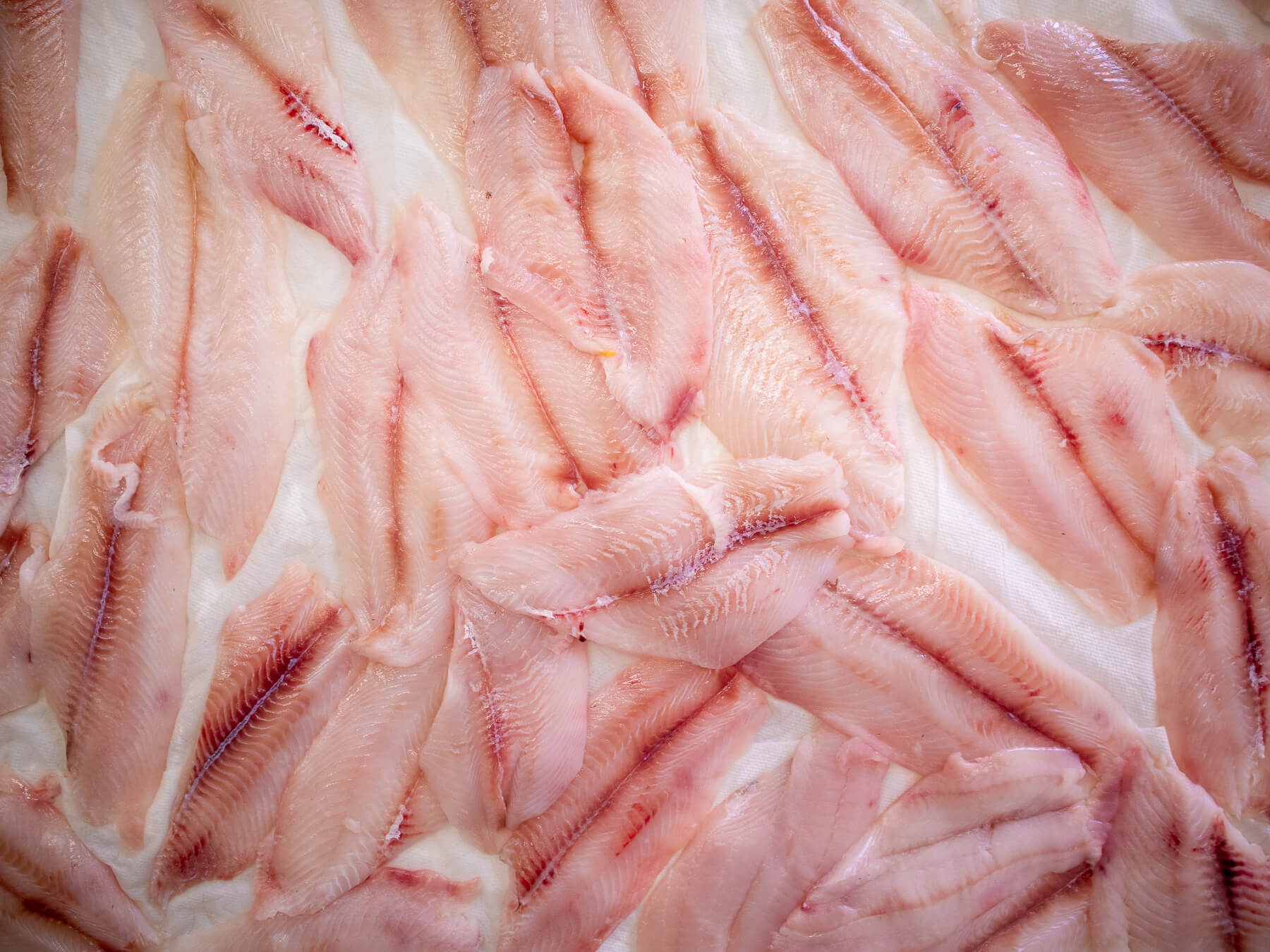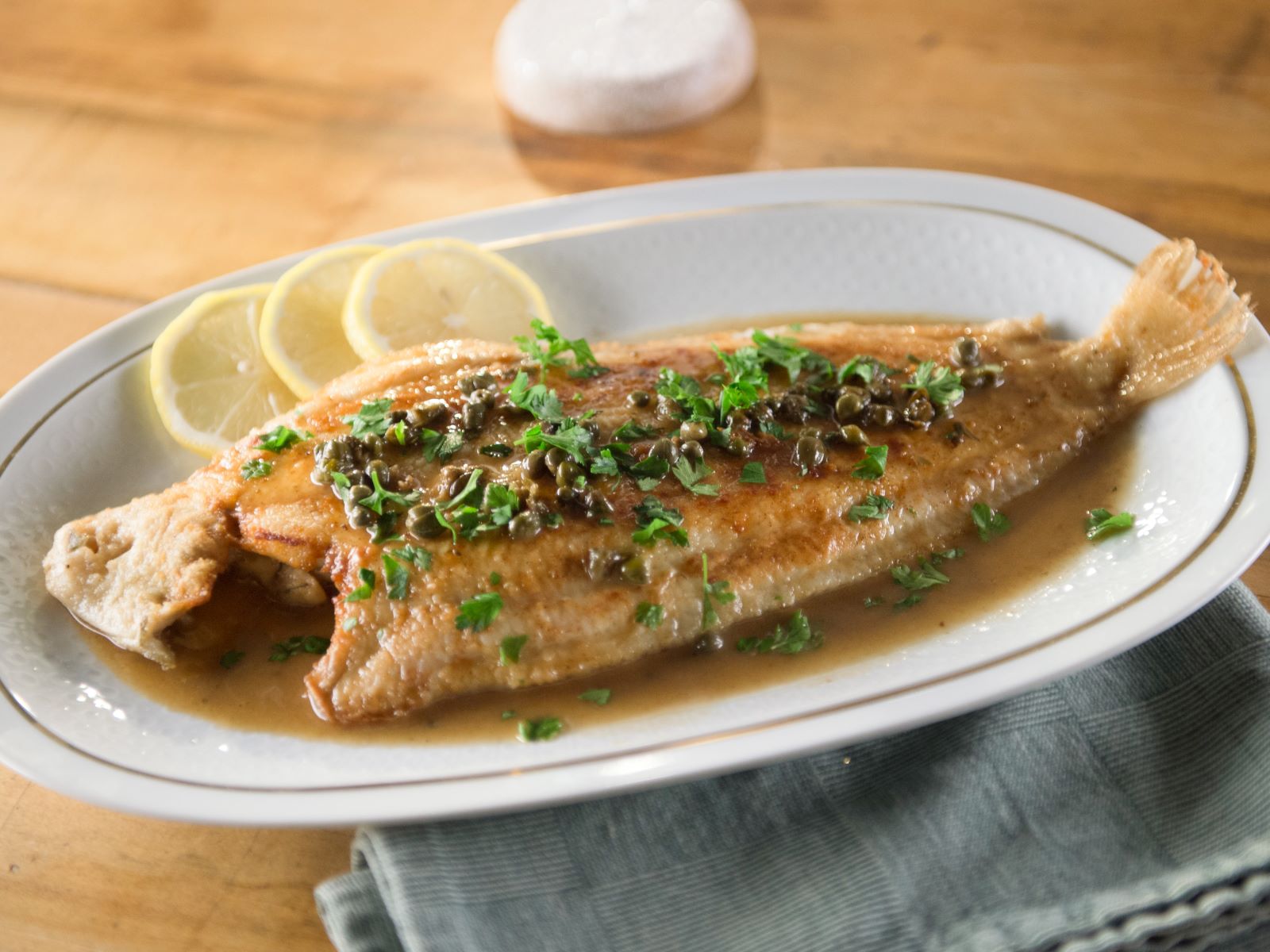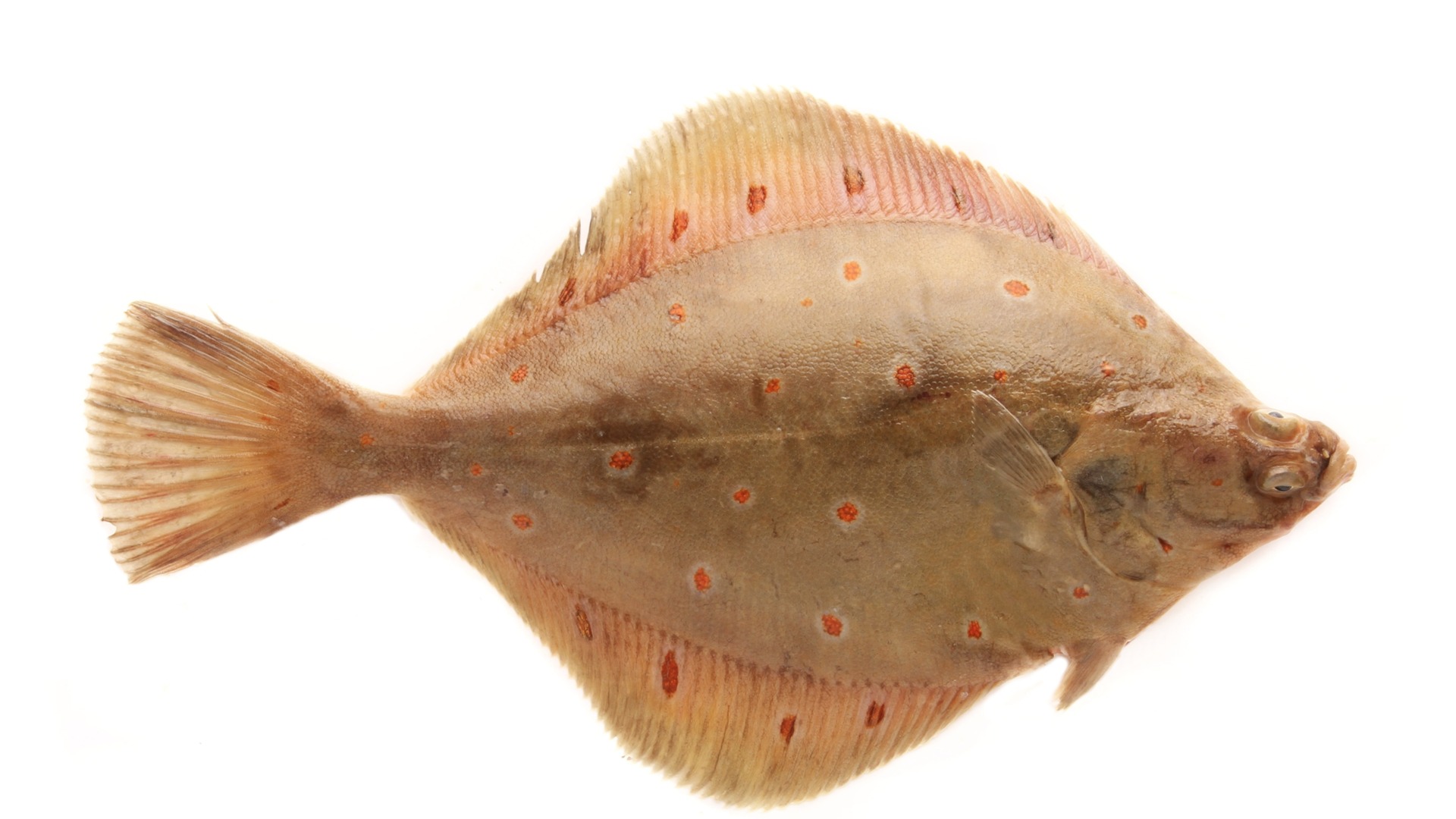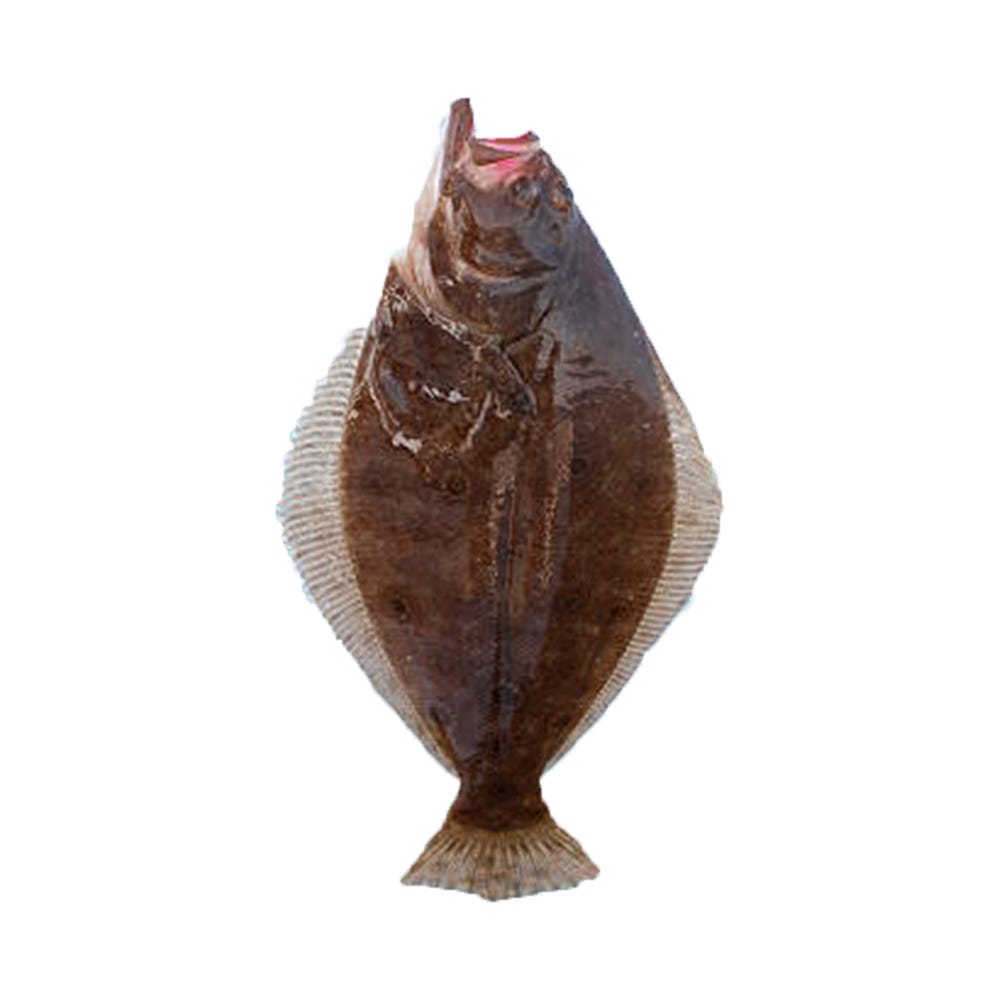Introduction To Sole Fish

Sole fish is a prized seafood known for its delicate flavor and firm texture. It is a type of lean flatfish that belongs to the Soleidae family. The most common variety of sole fish found in the market is the Dover sole fish. While primarily found along the coasts of Europe, certain species of sole fish can also be found in the waters of the Americas. Sole fish is highly versatile and can be prepared using various cooking methods. Its subtle taste pairs well with a wide range of seasonings and ingredients, making it a favorite among seafood lovers.
What Is Sole Fish And Its Culinary Importance
Sole fish is a prized seafood known for its delicate flavor and firm texture. It is a type of lean flatfish that belongs to the Soleidae family. The most common variety of sole fish found in the market is the Dover sole fish. While primarily found along the coasts of Europe, certain species of sole fish can also be found in the waters of the Americas. Sole fish is highly versatile and can be prepared using various cooking methods. Its subtle taste pairs well with a wide range of seasonings and ingredients, making it a favorite among seafood lovers.
Health Benefits Of Consuming Sole Fish
Consuming Sole Fish offers a variety of health benefits. Firstly, it is low in calories and fat, making it a great choice for those watching their weight. Sole Fish is also rich in omega-3 fatty acids, which are essential for brain function and heart health. These fatty acids have been linked to reducing the risk of cardiovascular diseases and promoting healthy cholesterol levels. Additionally, Sole Fish is a good source of vitamins B12 and D, both of which are important for maintaining healthy bones, skin, and a strong immune system. Including Sole Fish in your diet can be a nutritious addition to promote overall well-being.
Types Of Sole Fish

There are several types of sole fish, each with its own unique characteristics and flavors. Some of the most common varieties include Grey Sole, Lemon Sole, and Dover Sole. Grey Sole is known for its mild and delicate flavor, while Lemon Sole has a slightly tangy taste. Dover Sole is considered a delicacy, with a rich, buttery flavor. These different types of sole fish can be used interchangeably in recipes, depending on personal preference and availability. Each type offers a delightful dining experience, showcasing the delicate flavors that sole fish is known for.
Different Varieties Of Sole Fish
Sole fish comes in several different varieties, each with its own distinct characteristics and flavors. Some of the most common types include Grey Sole, Lemon Sole, and Dover Sole. Grey Sole is known for its mild and delicate flavor, making it a popular choice among seafood enthusiasts. Lemon Sole, on the other hand, has a slightly tangy taste that adds a unique twist to any dish. Dover Sole is considered a delicacy, with its rich and buttery flavor that melts in your mouth. These different varieties of sole fish offer a diverse range of flavors to suit every palate.
Characteristics And Flavors Of Each Type
Sole fish comes in several different varieties, each with its own distinct characteristics and flavors. Grey Sole is known for its mild and delicate flavor, making it a popular choice among seafood enthusiasts. Lemon Sole, on the other hand, has a slightly tangy taste that adds a unique twist to any dish. Dover Sole is considered a delicacy, with its rich and buttery flavor that melts in your mouth. These different varieties of sole fish offer a diverse range of flavors to suit every palate. Whether you prefer a subtle taste or something more robust, there is a type of sole fish for everyone.
Cooking With Sole Fish

Cooking with Sole Fish offers a myriad of delicious possibilities. Its delicate and mild flavor lends itself well to a variety of cooking methods. Whether you choose to pan-fry, bake, grill, or even steam, Sole Fish retains its tender texture and subtle taste. For a simple and classic dish, try Sole Meunière, where the fish is lightly floured and sautéed in butter, finished with lemon and parsley. The flaky nature of Sole Fish also makes it perfect for stuffing with flavorful ingredients like crabmeat or spinach. Get creative in the kitchen and explore the endless culinary opportunities with this exquisite fish.
Best Cooking Methods For Sole Fish
When it comes to cooking Sole Fish, there are several methods that truly bring out its delicate flavor and tender texture. One of the most popular methods is pan-frying. Heat up a pan with a little bit of oil or butter and sauté the Sole Fish until it becomes crispy on the outside and flaky on the inside. Another delicious option is baking the fish. Place seasoned Sole Fillets in the oven and let them cook to perfection. Grilling is also a fantastic option, as the smoky flavor adds depth to the fish. Lastly, if you want a healthier option, try steaming the Sole Fish. This method locks in the moisture and allows the fish to retain its natural flavors. Whichever method you choose, be sure not to overcook the Sole Fish, as it can become dry.
Recipes And Dishes Featuring Sole Fish
Sole Fish is a versatile ingredient that can be the star of many delicious dishes. One popular recipe is Sole Meunière, where the fish is coated in flour and pan-fried in butter with a squeeze of lemon juice. Another classic dish is Sole Amandine, where the fish is topped with a buttery almond crust and baked to perfection. For a lighter option, try Grilled Lemon Sole, marinated in herbs and lemon juice and cooked on the grill. Sole Fish can also be used in stews, soups, and curries for a flavorful twist. Enjoy the delicate flavor of Sole Fish in these mouthwatering recipes!
Nutritional Value Of Sole Fish

Sole fish is not only delicious but also packed with essential nutrients. It is a great source of high-quality protein, which is important for muscle growth and repair. Additionally, sole fish is rich in omega-3 fatty acids, which are known to promote heart health and reduce inflammation in the body. It also provides important minerals like selenium and phosphorus, as well as vitamin B12, which is essential for nerve function and red blood cell production. With its impressive nutritional profile, sole fish makes for a nutritious and tasty addition to any diet.
Nutrients Found In Sole Fish
Sole fish is not only delicious but also packed with essential nutrients. It is a great source of high-quality protein, which is important for muscle growth and repair. Additionally, sole fish is rich in omega-3 fatty acids, which are known to promote heart health and reduce inflammation in the body. It also provides important minerals like selenium and phosphorus, as well as vitamin B12, which is essential for nerve function and red blood cell production. With its impressive nutritional profile, sole fish makes for a nutritious and tasty addition to any diet.
Comparison With Other Popular Seafood Options
When comparing sole fish to other popular seafood options, such as salmon, tuna, and cod, it stands out for its delicate flavor and tender texture. Unlike salmon and tuna, sole fish has a milder taste that appeals to those who prefer a more subtle seafood flavor. Additionally, sole fish has a flaky and tender texture, making it easy to cook and enjoy. Its versatility also sets it apart, as it can be used in a variety of dishes and pairs well with a wide range of flavors. Overall, sole fish offers a unique culinary experience compared to other seafood options.
Pairing Sole Fish With Complementary Flavors

When it comes to pairing Sole Fish with complementary flavors, there are several options that can enhance its delicate taste. Recommended seasonings and ingredients include lemon, garlic, capers, parsley, and butter. The citrusy tang of lemon adds a refreshing zing, while garlic and butter provide depth and richness. Capers offer a briny and slightly tangy flavor, while parsley brings a fresh and herbaceous note. When serving Sole Fish, consider accompanying it with light and vibrant side dishes such as steamed vegetables, roasted potatoes, or a fresh green salad. These combinations create a balanced and flavorful meal that highlights the delicate flavors of Sole Fish.
Recommended Seasonings And Ingredients
When it comes to enhancing the delicate flavor of Sole Fish, there are a few recommended seasonings and ingredients that pair exceptionally well. To bring out the best in this fish, consider using lemon, garlic, capers, parsley, and butter. The citrusy tang of lemon adds a refreshing zing, while garlic and butter provide depth and richness. Capers offer a briny and slightly tangy flavor, while parsley brings a fresh and herbaceous note to the dish. These ingredients work together harmoniously to elevate the delicate taste of Sole Fish to new heights.
Ideal Side Dishes To Serve With Sole Fish
When it comes to serving Sole Fish, there are several ideal side dishes that perfectly complement its delicate flavor. One popular choice is mashed potatoes, which provide a comforting and creamy contrast to the lightness of the fish. Another classic option is green beans almondine, where the crispness of the beans and the nuttiness of the almonds add texture and depth to the dish. For a refreshing twist, a side salad with a lemon vinaigrette can bring a bright and tangy element to balance the richness of the fish. Ultimately, the ideal side dishes are those that enhance the flavors of Sole Fish while adding a touch of variety and balance to the meal.
Conclusion

In conclusion, Sole Fish is a highly sought-after delicacy known for its delicate flavor and versatility in cooking. Whether it’s Dover Sole, Lemon Sole, or Yellowfin Sole, each variety offers its own unique characteristics and taste. With its numerous health benefits and rich nutritional profile, Sole Fish proves to be a healthy and delicious choice for seafood lovers. Pairing Sole Fish with complementary flavors and serving it alongside ideal side dishes enhances the dining experience. As a sustainable and readily available seafood option, Sole Fish is a popular choice for cooking enthusiasts and restaurant-goers alike. Remember to consider sustainability and proper storage when buying Sole Fish to ensure its freshness and quality. Discover the delicate flavors of Sole Fish and enjoy its culinary pleasures.
Sole Fish Sustainability And Availability
Sole Fish is considered a sustainable seafood option. Fishing practices have been implemented to ensure the long-term viability of sole fish populations. These practices involve strict regulations on catch limits and the use of net mesh sizes to prevent the capture of juvenile fish. Efforts are also made to minimize bycatch and protect essential fish habitats, reducing the impact on the marine ecosystem. As for availability, Sole Fish is readily available in the market, making it accessible to seafood enthusiasts and restaurant-goers who seek the delicate flavors and culinary pleasures that this fish offers.
Tips For Buying And Storing Sole Fish
When buying Sole Fish, look for fresh fillets with a firm texture and a mild, slightly sweet scent of the sea. The flesh should be glossy and free from any discoloration or blemishes. Avoid fish that appears dull or has a strong fishy odor. When storing Sole Fish, it is best to keep it refrigerated and consume it within 2-3 days. To maintain freshness, store the fish in airtight containers or wrap it tightly in plastic wrap before placing it in the refrigerator. Freezing Sole Fish is also a viable option, ensuring it retains its quality for up to 6 months.
FAQ About Sole Fish: Discovering The Delicate Flavor Of Sole
Q: What is sole fish?
A: Sole fish is a type of flatfish that belongs to the genus Solea. It is known for its delicate flavor and tender texture, making it a popular choice among seafood lovers.
Q: Where is sole fish commonly found?
A: Sole fish is commonly found in both the Atlantic and Pacific Oceans, as well as in various seas and coastal waters around the world.
Q: How is sole fish typically cooked?
A: Sole fish can be cooked in a variety of ways, including baking, broiling, grilling, or pan-searing. It is often seasoned with herbs, spices, and lemon to enhance its natural flavors.
Q: What are the nutritional benefits of eating sole fish?
A: Sole fish is a good source of protein, vitamins, and minerals such as vitamin D, vitamin B12, and omega-3 fatty acids. It is low in saturated fats and calories, making it a healthy choice for those looking to maintain a balanced diet.
Q: Are there any sustainable fishing practices for sole fish?
A: Yes, there are sustainable fishing practices in place to help protect sole fish populations. It is important to look for certifications such as MSC (Marine Stewardship Council) when purchasing sole fish to ensure it has been sourced responsibly.
Q: What are some popular dishes that feature sole fish?
A: Sole meunière, a classic French dish where sole fish is pan-seared and served with a buttery lemon sauce, is a popular choice. Sole piccata, where sole fish is cooked in a tangy caper and lemon sauce, is another delicious option for enjoying this delicate fish.

Duke City Kitchen, known for its fresh, simple, and delicious cuisine, has a rich history deeply rooted in the heart of the local food scene. Since its inception, Duke City Kitchen has been dedicated to providing an exceptional dining experience that celebrates the region’s flavors. Founded by a passionate group of food enthusiasts, Duke City Kitchen opened its doors with the vision of offering a welcoming space where people could gather to enjoy thoughtfully prepared meals made from the finest, locally sourced ingredients. This commitment to quality and community has been a driving force behind Duke City Kitchen’s success.